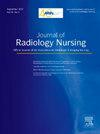Promoting Nursing Students’ Healthy Behaviors Through Cognitive Skills-Building
Q3 Nursing
引用次数: 0
Abstract
Introduction
Nursing students, who will eventually become practicing nurses, face significant health challenges due to the demanding educational environment, often leading to poor lifestyle choices and adverse health outcomes. Practicing nurses play a vital role as models for promoting healthy behaviors among students.
Methods
This study examines the impact of the MINDSTRONG program on nursing students' healthy behaviors at a Big 10 University, offering valuable insights for both students and practicing nurses.
Results
A 1-year follow-up survey with 142 participants revealed that most students (96%) utilized at least 1 healthy behavior weekly, with 70% practicing 2 to 3 times daily, particularly positive thinking (66%) and self-talk (63%). However, only 43% reported getting at least 7 hours of sleep per night, and just 12% consumed 5 servings of fruits and vegetables daily.
Conclusion
These findings underscore the need for improved strategies to enhance sleep hygiene and healthy food accessibility among students and within clinical environments where practicing nurses can model and reinforce healthy behaviors. By understanding nursing students’ adoption of healthy behaviors, targeted interventions and programming that support wellness can be integrated across all stages of a nursing career.
通过认知技能培养促进护生健康行为
导读:护理专业的学生最终将成为执业护士,由于苛刻的教育环境,他们面临着重大的健康挑战,往往导致不良的生活方式选择和不良的健康结果。实习护士在促进学生健康行为方面发挥着至关重要的模范作用。方法本研究考察了MINDSTRONG项目对十大大学护理专业学生健康行为的影响,为学生和实习护士提供了有价值的见解。结果一项为期1年的随访调查显示,大多数学生(96%)每周至少有1种健康行为,70%的学生每天练习2至3次,特别是积极思考(66%)和自言自语(63%)。然而,只有43%的人每晚至少睡7个小时,只有12%的人每天吃5份水果和蔬菜。结论:这些发现强调了改善策略的必要性,以提高学生和临床环境中的睡眠卫生和健康食品可及性,在临床环境中,执业护士可以示范和加强健康行为。通过了解护理学生对健康行为的采用,有针对性的干预和支持健康的规划可以整合到护理职业的各个阶段。
本文章由计算机程序翻译,如有差异,请以英文原文为准。
求助全文
约1分钟内获得全文
求助全文
来源期刊

Journal of Radiology Nursing
Nursing-Advanced and Specialized Nursing
CiteScore
0.80
自引率
0.00%
发文量
95
审稿时长
57 days
期刊介绍:
The Journal of Radiology Nursing promotes the highest quality patient care in the diagnostic and therapeutic imaging environments. The content is intended to show radiology nurses how to practice with compassion, competence, and commitment, not only to patients but also to the profession of nursing as a whole. The journal goals mirror those of the Association for Radiologic & Imaging Nursing: to provide, promote, maintain , and continuously improve patient care through education, standards, professional growth, and collaboration with other health care provides.
 求助内容:
求助内容: 应助结果提醒方式:
应助结果提醒方式:


